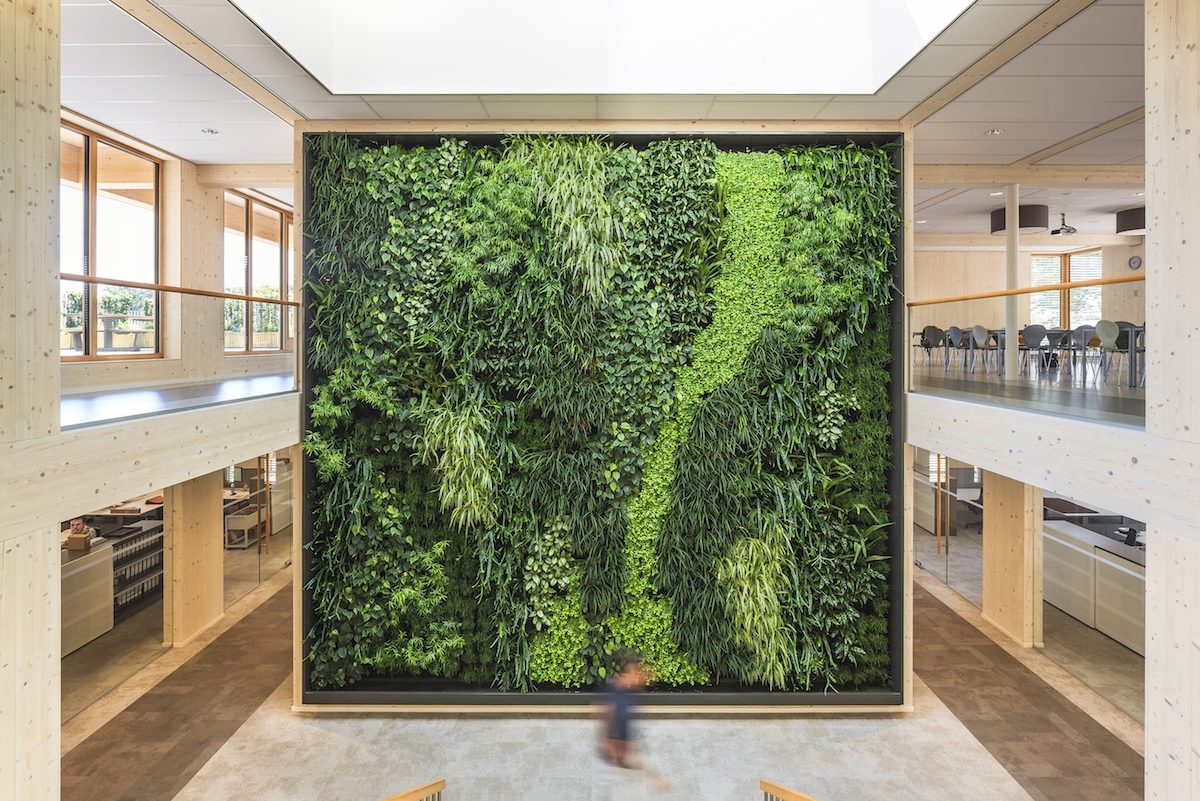Story at a glance:
- Studies show that adding biophilic design elements in commercial spaces has positive effects on occupants.
- Introducing natural elements indoors is integral to deepening our relationship with nature.
- Biophilic design can span from potted plants to paint colors.
Due to the tumultuousness of 2020, many of us are reassessing our environments: where to live, how to be, and in what sort of space. Upon returning to the office, builders may be asking themselves how to pivot and prioritize well-being in a way that can better serve the mainstream’s demand for increased sustainability efforts and work-life balance. The answer to these questions may be in incorporating biophilic design.
Here are 15 ways to integrate biophilic design elements into your next commercial project.
1. Install a green roof.
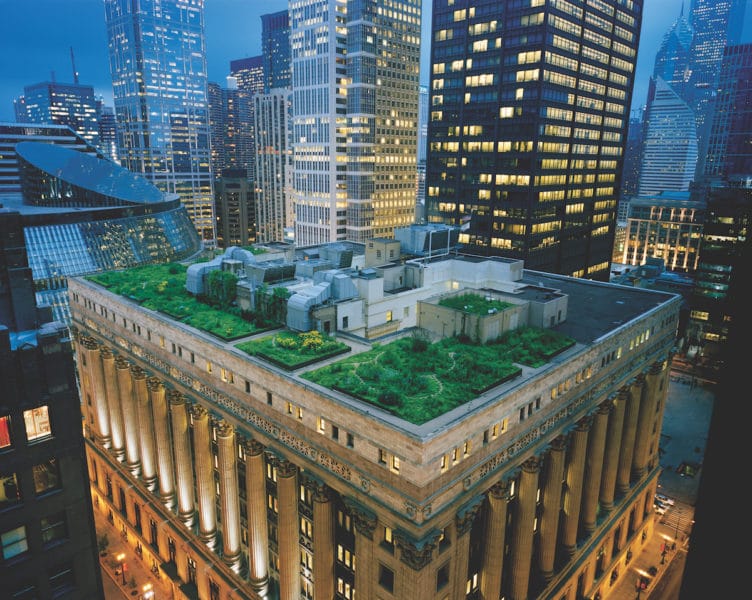
A green roof on Chicago’s City Hall. Photo courtesy of Sika Sarnafil
Green roofs host a myriad of benefits, such as reducing the heat island effect in urban areas and improving stormwater runoff management. By absorbing sunlight and providing shade, green roofs also reduce reliance on air conditioning, cutting energy costs and consumption. Consider installing edible garden, wildflowers, or pre-grown tray systems with native plants for a lush green roof.
2. Add green walls.

Ambius installed 3,338 square feet of living walls at the SoundWaves waterpark at Gaylord Opryland Resort & Convention Center in Nashville in fall 2018. Photo courtesy of Ambius
This biophilic design element shines at Nashville’s Gaylord Opryland Resort and Convention Center. This large-scale green wall project took roughly a month to complete and covers more than 3,000 square feet. The wall provides aesthetic benefits, as well as insulation and privacy to guests. Indoor green walls can also be an alternative to green roofs for places with more extreme climates.
3. Use green dividers.
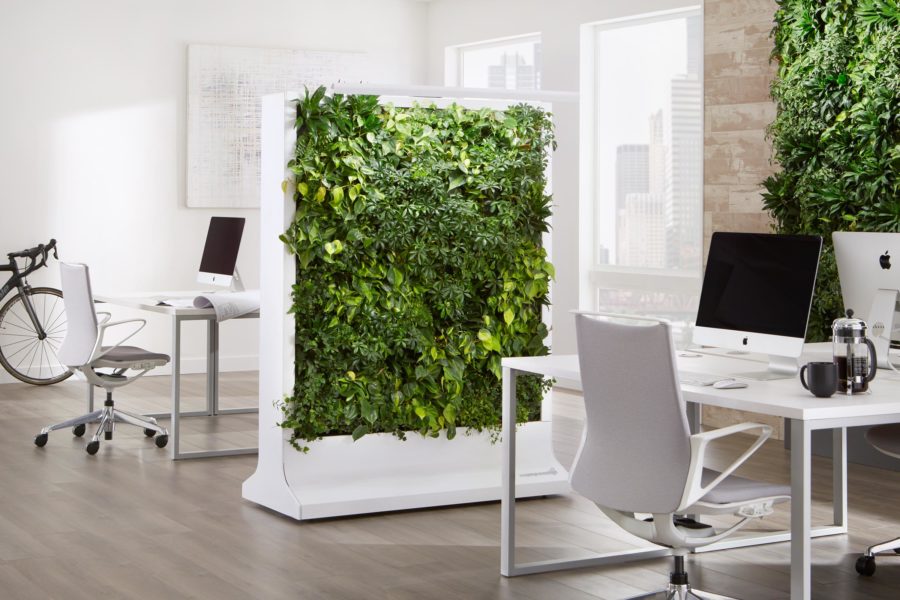
Sagegreenlife is known for its biophilic solutions, which bring life into various spaces like the workplace or home. Photo courtesy of Sagegreenlife and Steelcase
Because the workplace is changing, so are office spaces. Green dividers are a calming alternative to cold and isolating cubicles. This biophilic design element can be less costly than large-scale installations but provide just as much comfort to the office environment. The colors, textures, and scents can even create inviting environments more conducive to long hours, reports a recent UK study.
4. Include indoor plants.
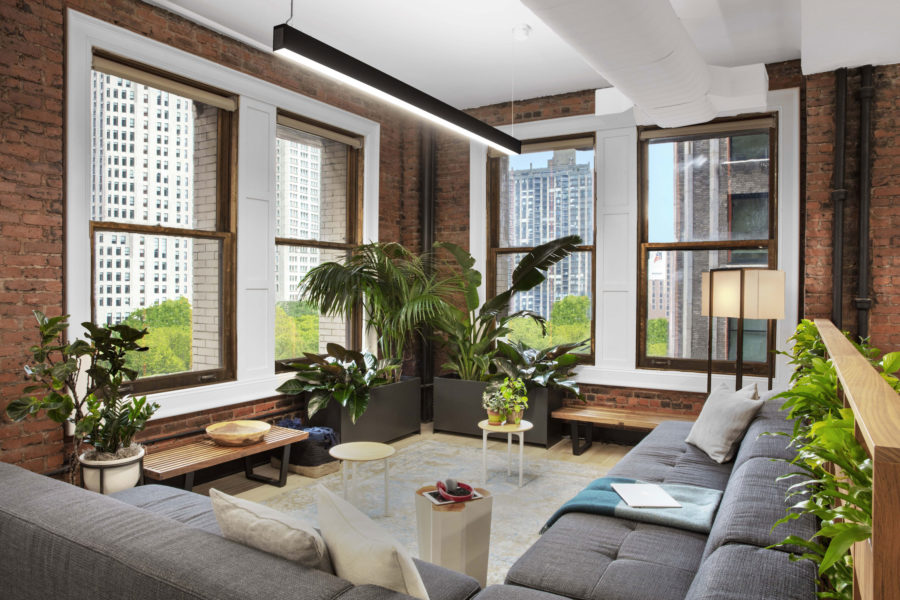
A New York City office can come to life with the addition of potted plants and palms. Photo by Eric Laignel
A simple way to add a biophilic touch is to add potted plants. Long known to cleanse the air of harmful VOCs, indoor plants can also be low-maintenance and low-cost.
A 2015 study indicated that indoor plants can also reduce physiological and psychological stress. Some of the most versatile plants to include are English Ivy, Bamboo Palm, and Weeping Fig, all of which add color, a sense of liveliness to any space.
5. Paint with natural colors.
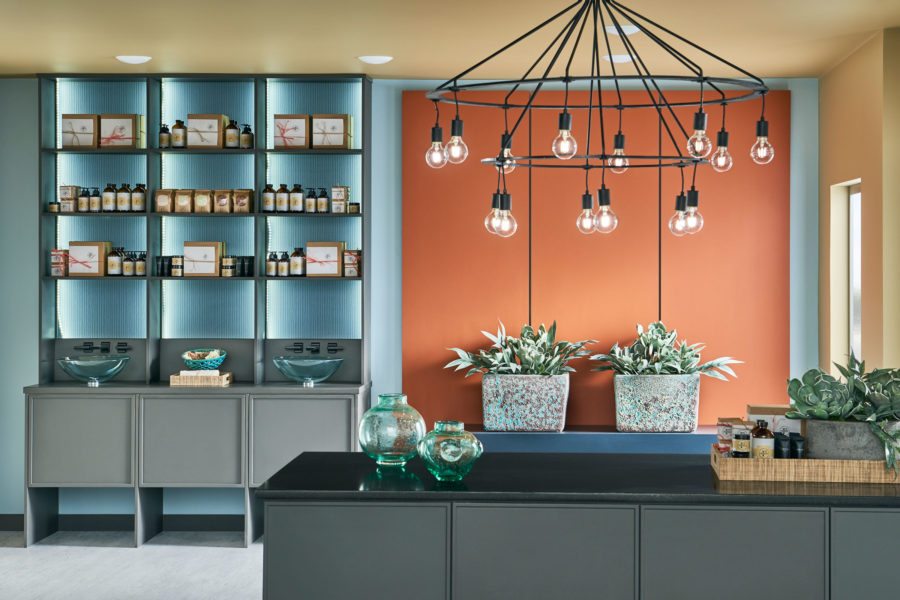
Behr’s Premium Plus paints are GREENGUARD Gold Certified. Photo courtesy of Behr
Not all biophilic design elements require a trip to the nursery. Known as Ecological Valence Theory, using natural paint colors can promote well-being and can induce positive environmental associations within a space. Using neutral colors like greens, blues, and browns promotes less stress and higher productivity.
Opting for water-based paints low in VOCs will additionally help create better air quality without sacrificing design.
6. Opt for wood.
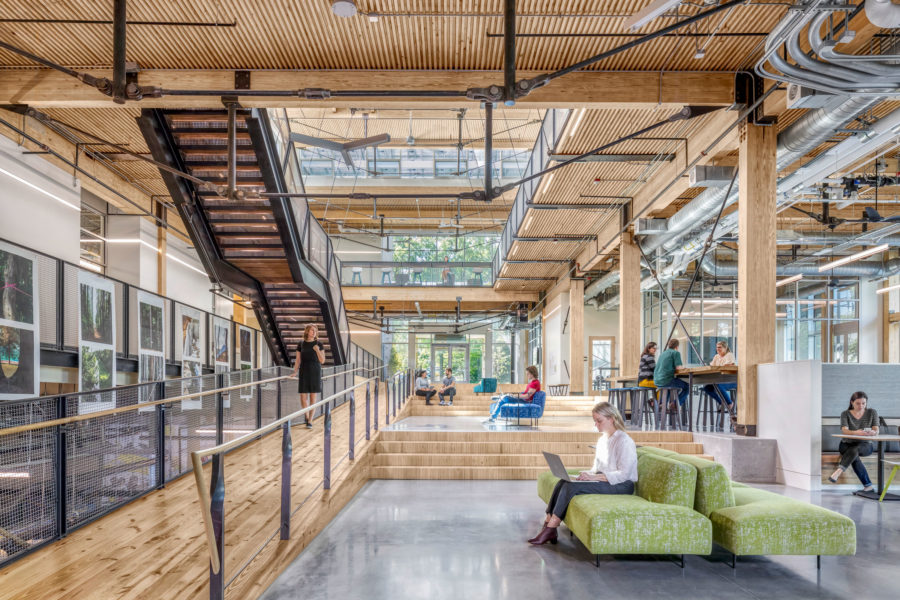
The Kendeda Building for Innovative Sustainable Design. Photo courtesy of The Miller Hull Partnership in collaboration with Lord Aeck Sargent, a Katerra Company, Uzun + Case. Photo by Jonathan Hillyer
Including exposed wood in projects adds warmth and comfort in contrast to its otherwise cold counterparts like concrete or drywall. Wood’s colors and textures engage occupants with strong feelings of nature, reminiscent of log cabin fantasies.
The use of water-based wood finishes, as opposed to oil-based, have fewer VOCs, too. Water-based wood finishes are also noncombustible, eliminating the risk of fire hazards.
7. Increase daylighting.
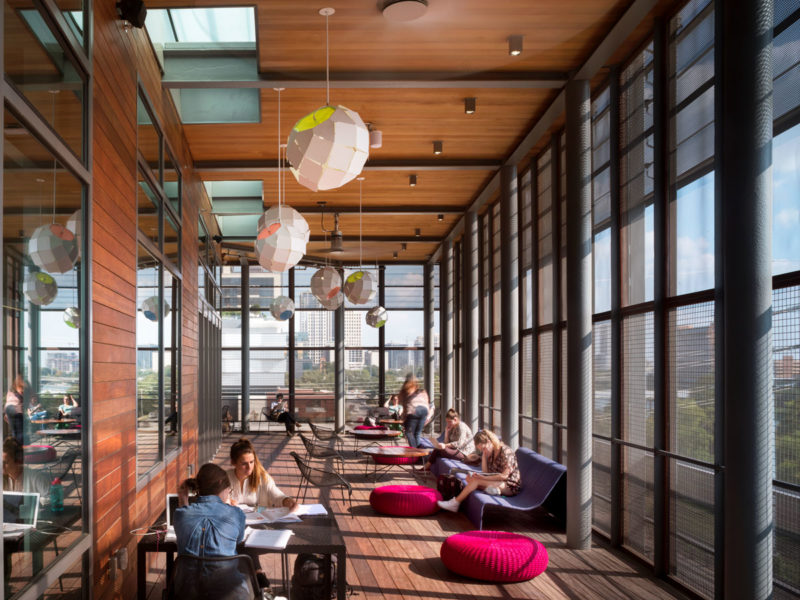
The LEED Platinum Austin Central Library emphasizes daylighting. Photo courtesy of Lake|Flato
Incorporating natural light not only saves energy but is also integral to creating connection with the outdoors. Using natural light is “scientifically proven to increase cognitive performance, reduce stress, and boost health and well-being,” Marti Hoffer, founder of lumenomics, wrote in a previous article for gb&d.
8. Enhance airflow with HVLS fans.
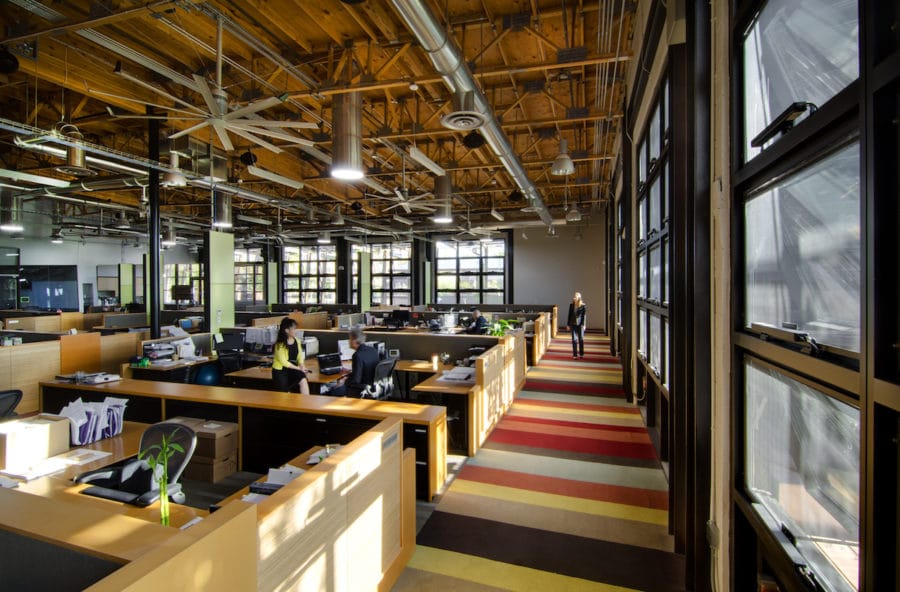
Photo by Gregg Mastorakos
Qualities like musty, stale, and stuffy are the enemy of a productive workspace. Studies have shown that productivity weakens and errors increase in offices with dull airflow. To combat this effect and mimic the feel of natural fresh air, it’s a good idea to install HVLS fans. HVLS fans can remove excess moisture and odors from the air, helping to prevent the buildup of mold and in turn keeping buildings in better condition for longer.
9. Incorporate a water feature.

More designers are including fire and water in their landscapes, whether as a focal point or accent. Photo courtesy of Dragonfly Ponds and Patios
In the same way that being in nature can revitalize the body and mind, incorporating biophilic design elements can enhance a space by stimulating the senses. Integrating water features for their soothing sounds is a great way to add passive movement into a space. A study from the Finnish Institute of Occupational Health concluded that spring water sounds are also the most effective speech masker in an open office.
10. Pay mind to scent.
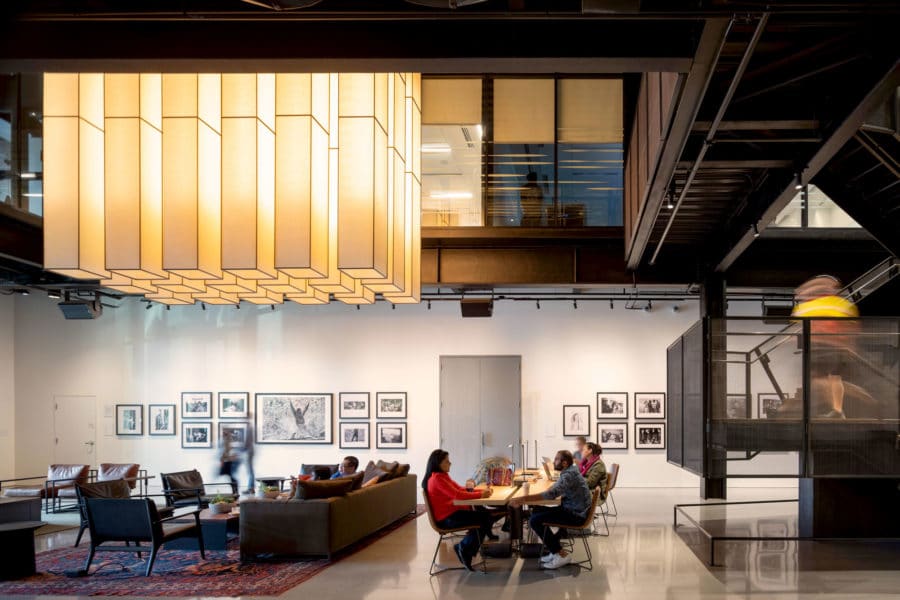
The LEED Gold 9th & Thomas was designed to be a neighborhood gathering place. A public lobby is home to a range of curated arts programming. Photo by Nic Lehoux
Rooms full of people from all from different backgrounds with different habits and preferences can make for a lot of smells. By first filtering the air and then using fans to circulate, buildings can benefit from including oil diffusers equipped with natural fragrances like citrus or eucalyptus. Natural fragrances can conjure images of nature and have therapeutic benefits such as increasing alertness and promoting feelings of happiness.
11. Install plants on a trellis.
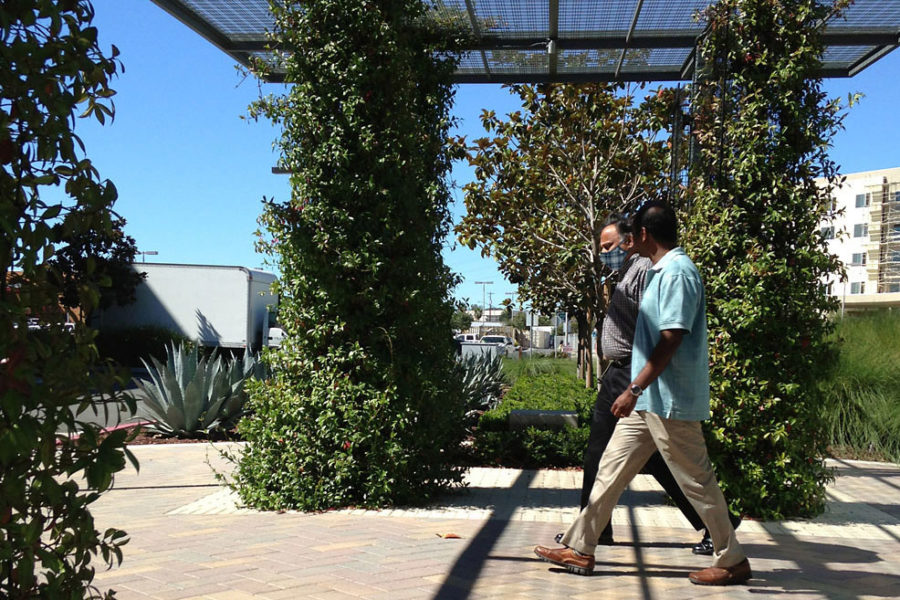
Photo courtesy of greenscreen
Similar to green walls, trellis panels are artful additions oftentimes placed upon an entryway or exit. Depending on the climate, Bougainvillea, Nasturtium, Wisteria, and Morning Glory are great climbing plant choices for their warm weather tolerance and ability to be trained. Companies like greenscreen are developing trellis panels and planter combinations to enhance commercial buildings made more urgent by Covid-19.
12. Mitigate noise.
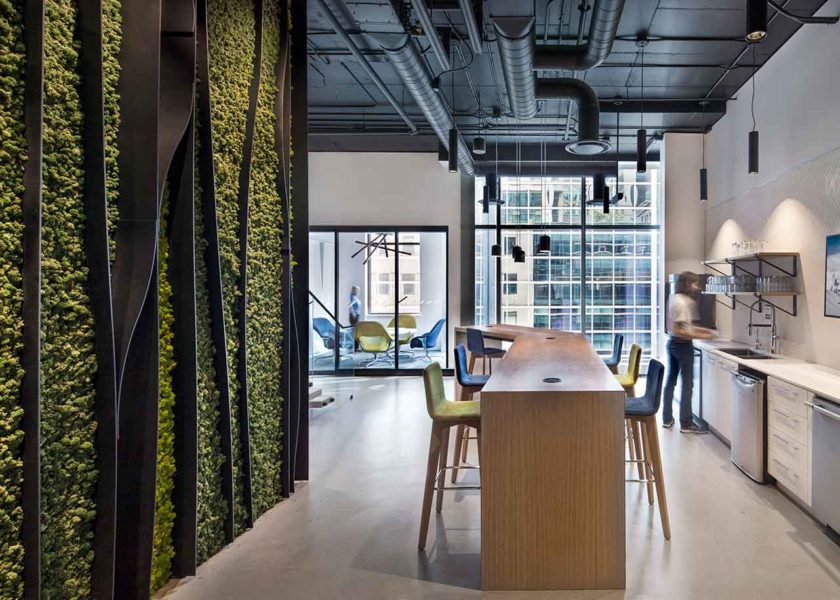
Photo: Claude-Simon Langlois
There are many aspects of an office with the potential to generate complaints, but according to a 2013 study the most pressing was lack of sound privacy. So how does that relate to biophilic design? Researchers have concluded that plants have the potential to provide acoustic insulation and noise absorption. High density moss walls are particularly effective.
13. Make use of hygienic materials.
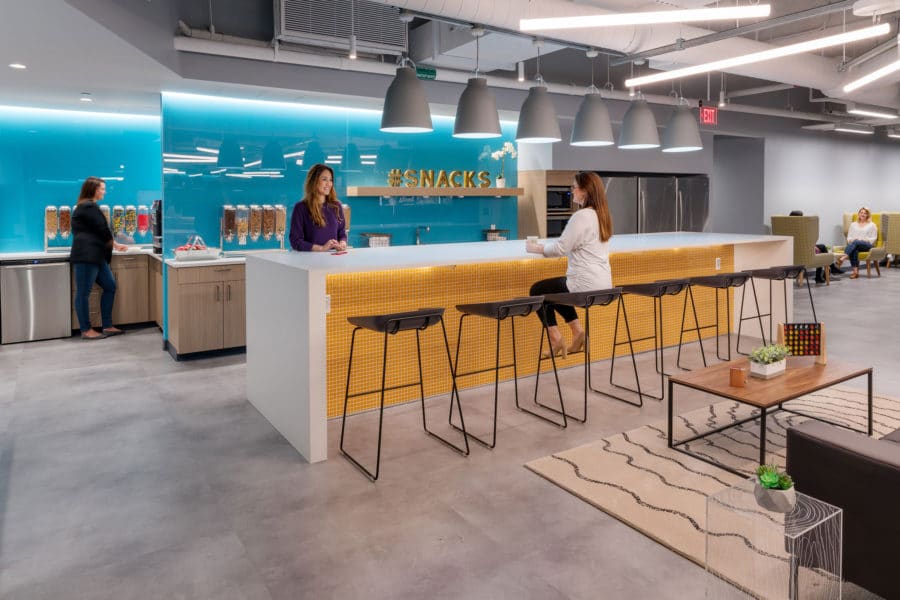
ServiceNow’s quartz countertops help reduce bacteria growth within its employee hub. Photo courtesy of Margulies Perruzzi
Given the money spent on hand sanitizer in 2020, we should all be more mindful of building with hygienic materials that harbor fewer bacteria. Biophilic design seeks to connect people with nature but also to make improvements upon the psychological aspects of well-being.
When a building can boast its natural anti-bacterial features, using naturally occurring materials like soapstone and quartz, occupants have peace of mind reducing stress in light of infectious viruses that normally run through offices like wildfire.
14. Create space for fire.
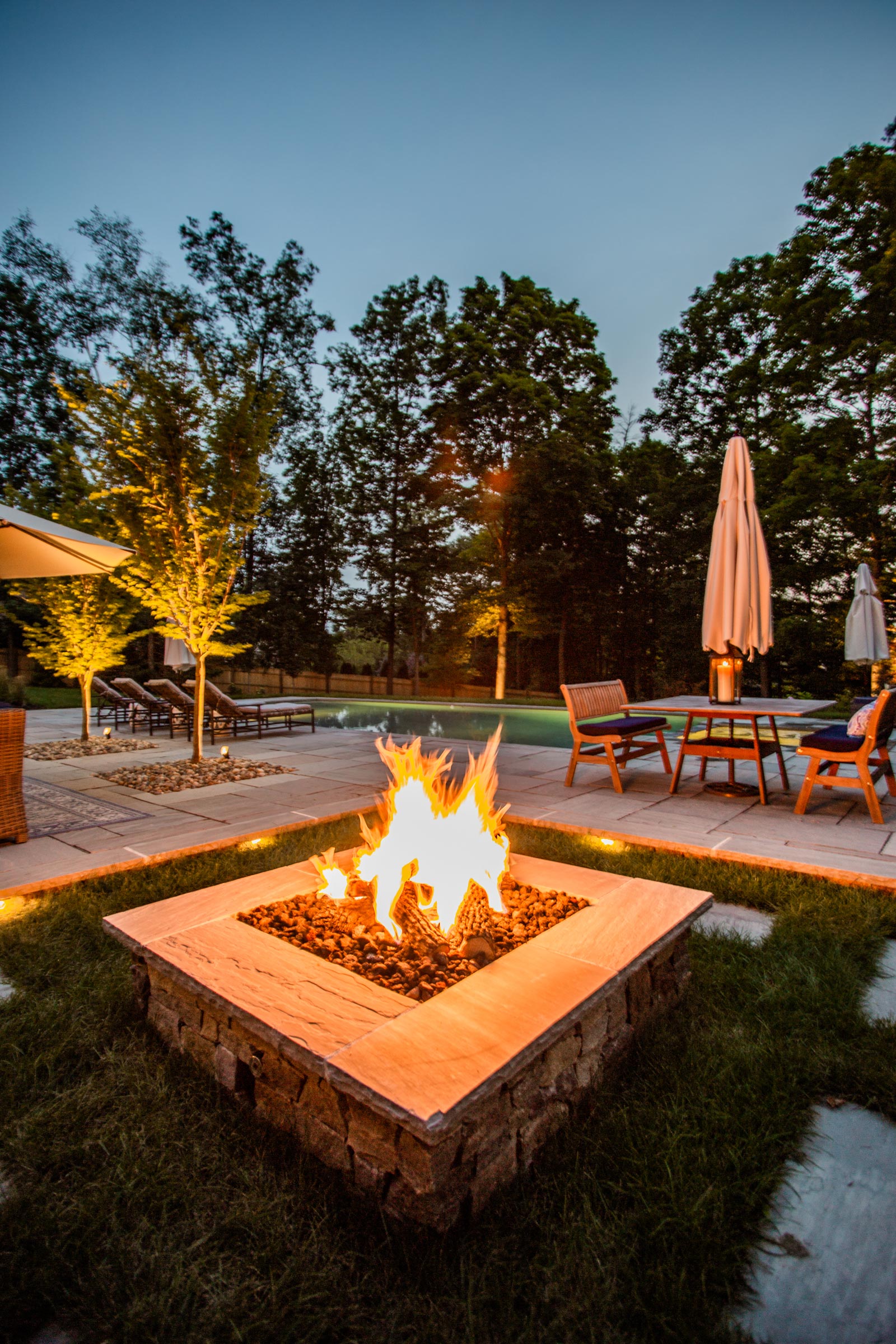
The size and shape of a fire feature like this one from Warming Trends depends on whether it’s a focal point, accent, or used to help define spaces. Photo courtesy of Dragonfly Ponds and Patios
There is perhaps no human fascination greater than that with fire. By incorporating fire features in communal spaces, people can enjoy the warmth and increased vitality brought on by the smells, sounds, and visual components of orange flames. Fire features can be customized by size, shape, and intention, whether it’s the focal point or an accent. They can also add a home away from home element usually reserved for cozying in nature.
15. Build natural facades.
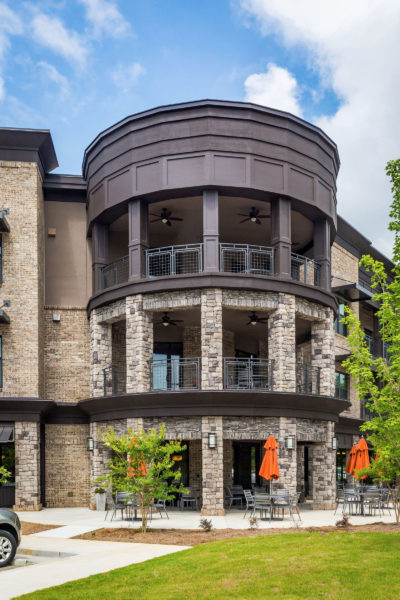
This multifamily home features a gathering space with Gray Cobblefield®, designed to emulate the architecture of rural 19th-century America. Photo courtesy of Cultured Stone
Buildings made of steel versus natural materials have different emotional appeals. Biophilic design elements favor natural materials for their positive environmental associations. Manufactured stone veneer, for example, comes in numerous colors and textures and evokes a strong connection with nature.
“Mother Nature is a true source of inspiration and an important anchor to our life experiences, so we strive to maintain the textures and color tones found in nature,” Sarah Lograsso, director of marketing and product design for Cultured Stone, told gb&d in a previous article.

